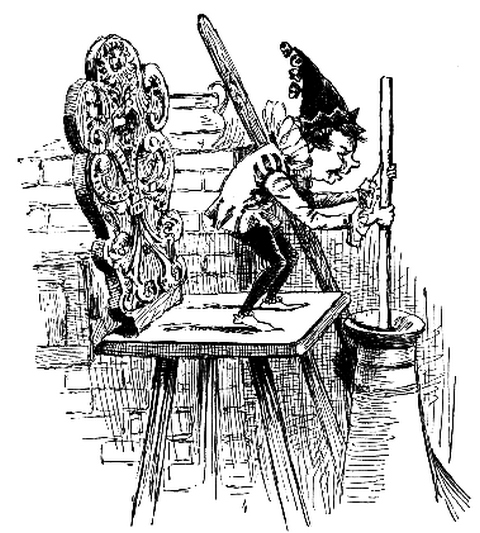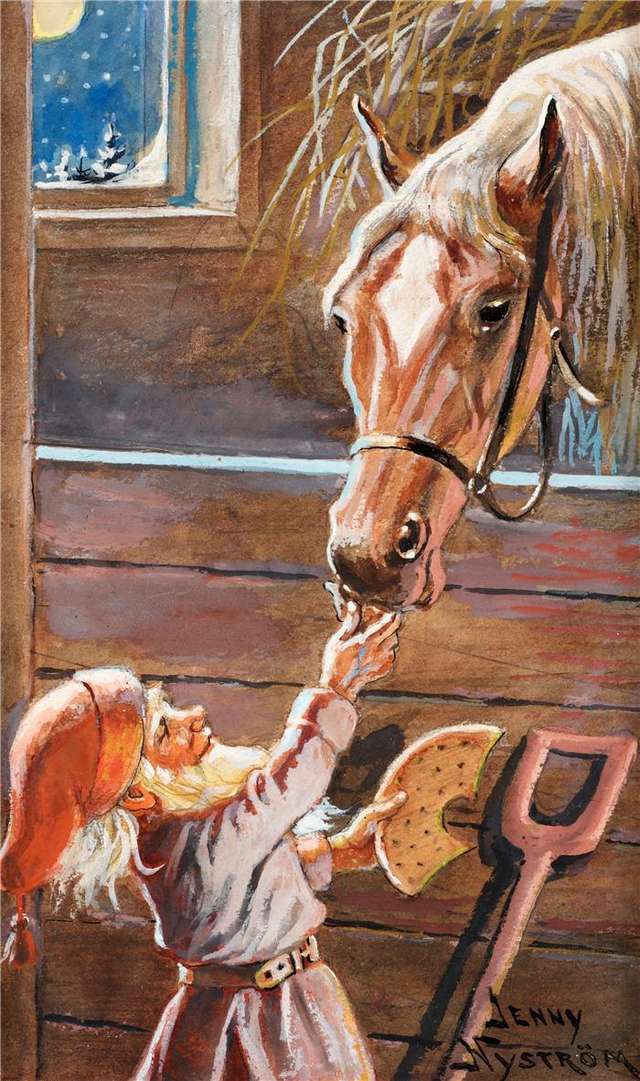Brownies - sensitive house spirits
Brownies are house spirits which can be roughly classified as fairies. A typical brownie has the role of a helper but his view on house chores is pretty specific. Traditionally he works for the owners of the house by night, do what he (it looks male gender is in majority among brownies) is in the mood for (not as the master of the house might prefer) and is not always nice.
Oldest folktales depict brownies as ugly creatures of dark, brownish skin, about the human size and human shape. Newer stories rather describe them as smaller than adults, often even smaller than children, still more often ugly than pretty, sometimes able of shape-shifting or becoming invisible. They are sometimes reported to have only a hole instead of the nose and no fingers on their hands. It seems male gender dominates among the brownies.

Clothes of brownies are almost always rugs or at least very old and dirty but it's strictly forbidden to think about giving them decent clothes. They would take such action as an ultimate insult
and very likely live the house for good, taking their knowledge and luck with them.
A fairy tale The shoemaker and the elves by Brothers Grimm is a classic example of this mistake.
Another forbidden task is baptizing the brownies - they are very afraid of Christian symbols and it seems holy water gives them unbearable pains.
One possible explanation can be a natural aversion of brownies to anything that might bind them - on a physical or a symbolical level, being clothes or being a member of the Christian
community.
The best-known house spirits of literature today are probably house-elves (terms brownie and elf is often used interchangeably) from the Harry Potter series, but these are not free, while a
traditional house spirit lives in one's house because he wants that. When he doesn't like his home anymore, he simply leaves.
Brownies prefer certain things to enjoy working in one's house:
- they don't want to be seen by people (but people often like to spy on them and are caught in most cases what almost always results by parting brownies from the house),
- the like clean houses (while they do many different house tasks, including cleaning, they just like to be in a more or less neat environment),
- they like to find some food waiting for them while working (simple food means milk, porridge, a slice of bread, simple stuff like that, but occasionally needs a special treat like a pint of cream or a piece of good cake with honey; beware: never feed them with sour milk!).
Please note: the tradition of leaving a glass of milk and some cookies to Santa very likely came from traditions connected to brownies and other house spirits.

Brownies like to work with animals and are often very friendly with house pets. They prevent hens from laying eggs out of their nests, reap, tidying up, mow, pile up the corn, herd the sheep, taking care of the horses, threshing the wheat, milk the cows, finish chores which human servants didn't manage to finish, ...
A brownie is often attached to one of the house members much more than to others. Sometimes a brownie plays pranks on lazy (human) servants of the house.
While essentially from the Lowlands of Scotland natural territory of brownies extends almost all over England, including the islands occasionally being mixed with pixies (which are not the same
creatures), being present in a very similar form but under different names in Ireland, Scandinavian countries, and Germany.

A brownie in Germany is more known as a kobold, in the Scandinavia, it's a tomte (Sweden) or a nisse (Norway). In all cases, they are very closely related to dwarfs.

If a brownie is offended, he can turn into a boggart, essentially the same creature from the family of hobgoblins but specialized in malevolent tasks: hiding things, causing milk to sour, hurting animals, ...
Sometimes a boggart may be turned into a friendly brownie again by an apology or some act of kindness, but sometimes only leaving one's home may help to escape from viscous boggart.
Brownies inspired hundreds and hundreds of artists. We'll try to present as many examples as possible.
 Fairy Land
The World of
Magical Creatures
Fairy Land
The World of
Magical Creatures

